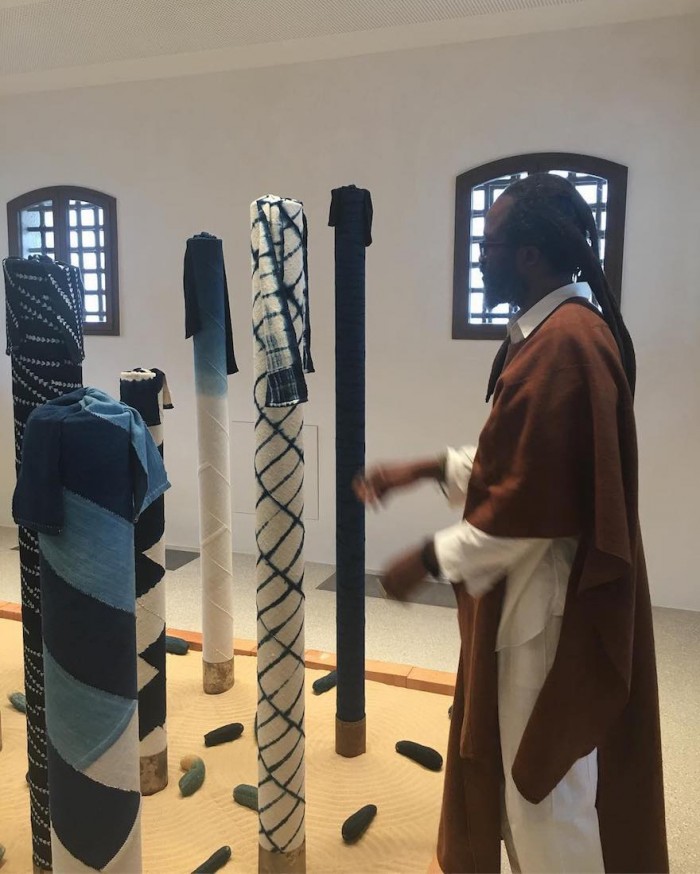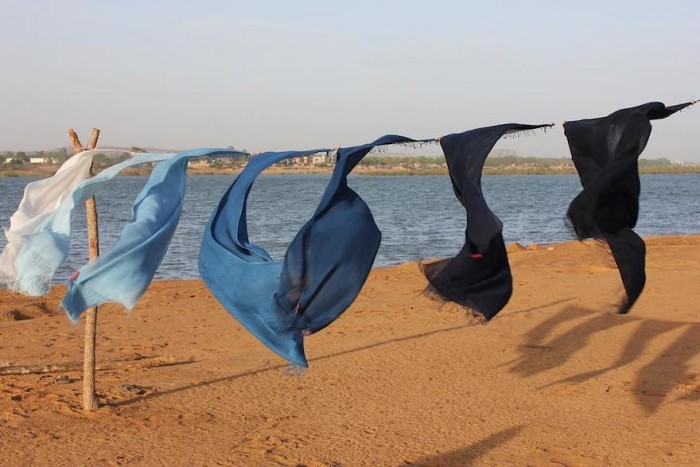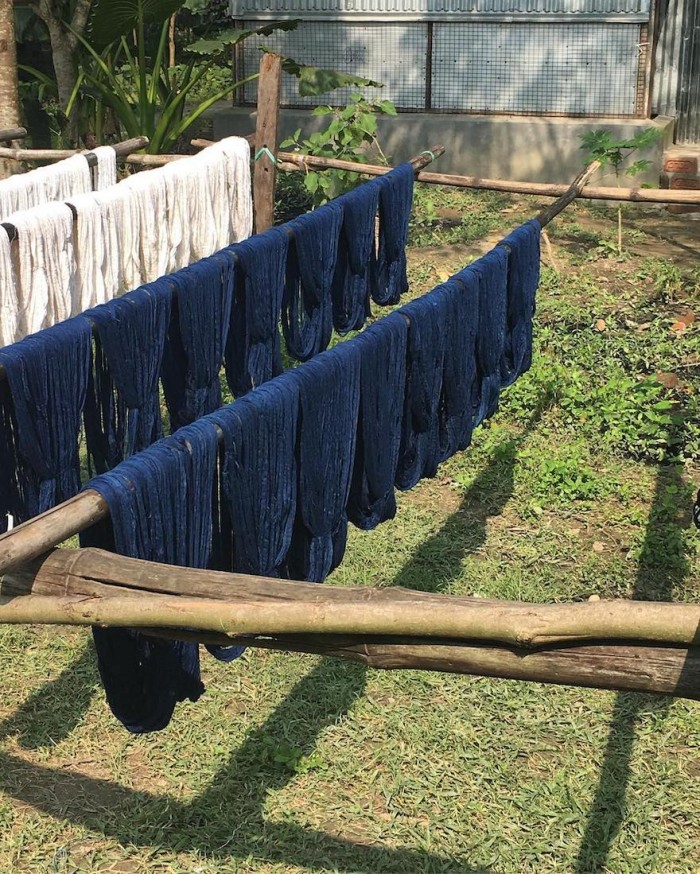It was in response to the collapse of five garment factories in Bangladesh where over 1100 people lost their lives that the fashion industry started waking up to the reality of the cost of their clothes.
The Fashion Revolution Week, and its resulting #whomademyclothes campaign, was lauched to fall on the anniversary of the Rana Plaza factory collapse, which happened on 24th April 2013. The movement wants to encourage more transparency in the supply chain.
It was in the spirit of fashion revolution week, which ends on Sunday, that Malian textile designer, artist and natural dyer Aboubakar Fofana took to his Instagram to address the hypocrisy that still exists within the fashion industry.
Fofana, who is one of the world's foremost practitioners of fermented indigo vat dyeing and mineral mud-dye techniques, runs his business from Bamako in Mali.
"The first thing I guess I want to address is the cycle of clothing. Recently I noticed a post addressing clothing waste by a well-known trend forecaster. I was struck by the incredible hypocrisy of this. One of the things that is most horrifying about the fashion industry is the sheer amount of clothing that is produced, and the life-cycle of that clothing, and so much of that waste is generated in response to the need for designers to always be producing something new, and always conforming to what trend forecasters say. This year we are wearing yellow in spring, blue in summer, and by autumn it's something different."
Fofana says that the the fashion industry is now engaged in a fake conversation about sustainability yet most designers are still producing several collections per year based people's perceptions and propped up by trend forecasters and the designers themselves.
"From my point of view, coming from a West African country, coming from a developing country, my distaste extends to what people don't see. Cotton – for example. Mali was, not too long ago, Africa's largest producer of cotton, and yet there is not a single cotton mill in the entire country. It is all exported, so no added value remains in-country, no infrastructure is created, no jobs made, nothing. Just the depleted soil and pesticide residue."
Instead what happens is that the cotton is transported to the developing world where it is made into clothes, sold in shops and then discarded either going to landfills, which in many countries that landfill is exported to a developing country to absorb or donated to charity.
"The vast bulk of donated charity-shop clothing – that which isn't sold – is shipped back to developing countries and dumped into the clothing market. It is cheaper to dump this clothing into developing countries than to deal with it in the country of sale. The effects this has on a country like Mali are savage.
"Having first lost control of our primary resource – cotton – we lose all the potential added value when it is exported in raw form. And now that precious cotton, grown on our soil using our resources, is returning to us in the form of used worn clothing. It's very cheap, this worn clothing, and we have no way of competing against this influx of rubbish from the West.
"So now you can see the whole cycle – we have no infrastructure to transform the cotton, so we cannot create employment. And when the clothing comes back in, it once again strips employment by devaluing the work of local manufacturers, weavers, and tailors who simply cannot compete at all with the price point.
And then there is the appalling paradox of people having to wear waste clothing made from their own resources because the system they are forced to participate in takes those resources out of their control, and the products of those resources out of their reach."
Fofana says it is therefore hypocritical for the fashion industry to talk sustainability, anti-slavery, environmental issues while they are still participating in the fashion cycle, and still talking about trends and trend forecasting.
More on fashion:
This designer uses bacteria to help make colourful silk scarves









